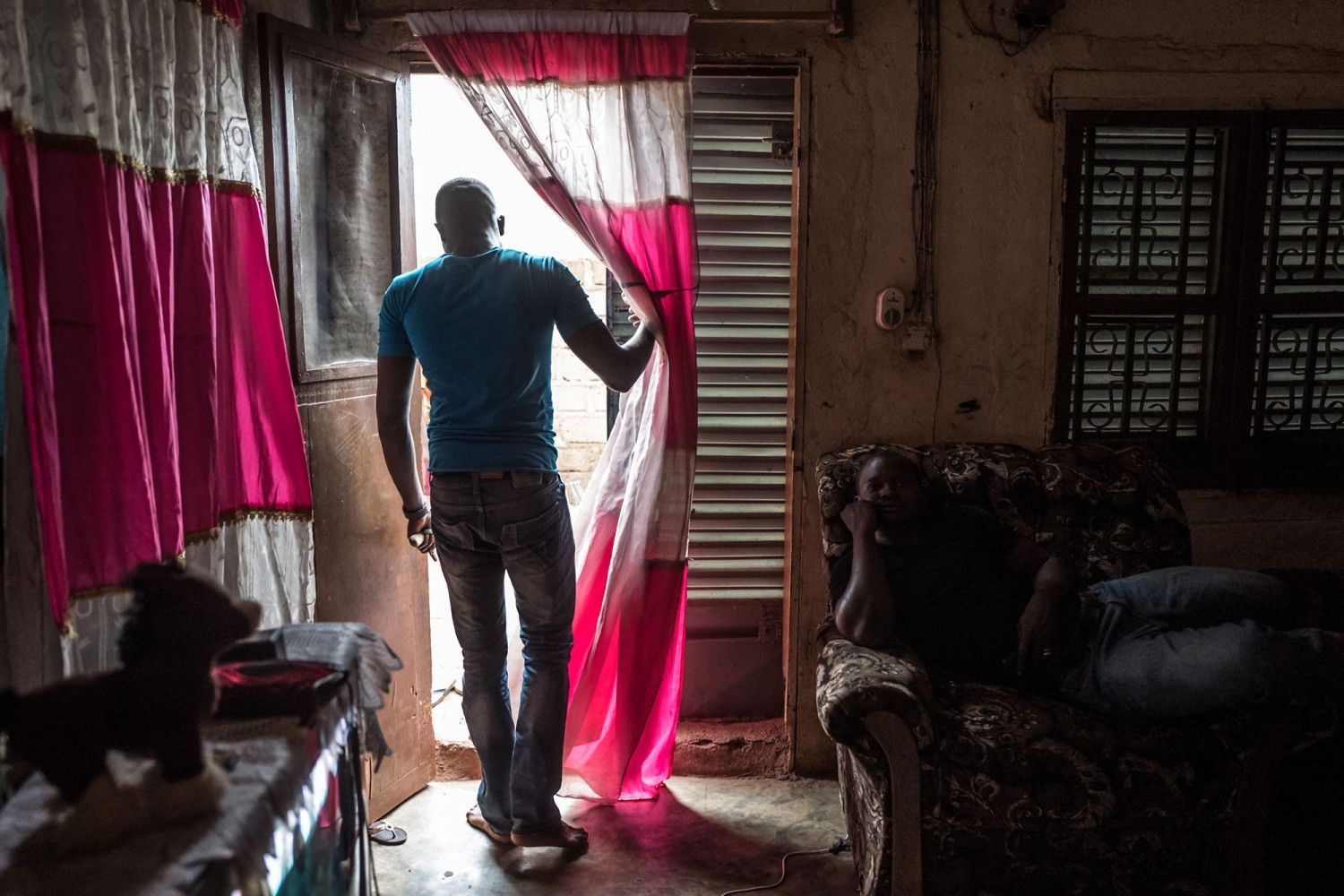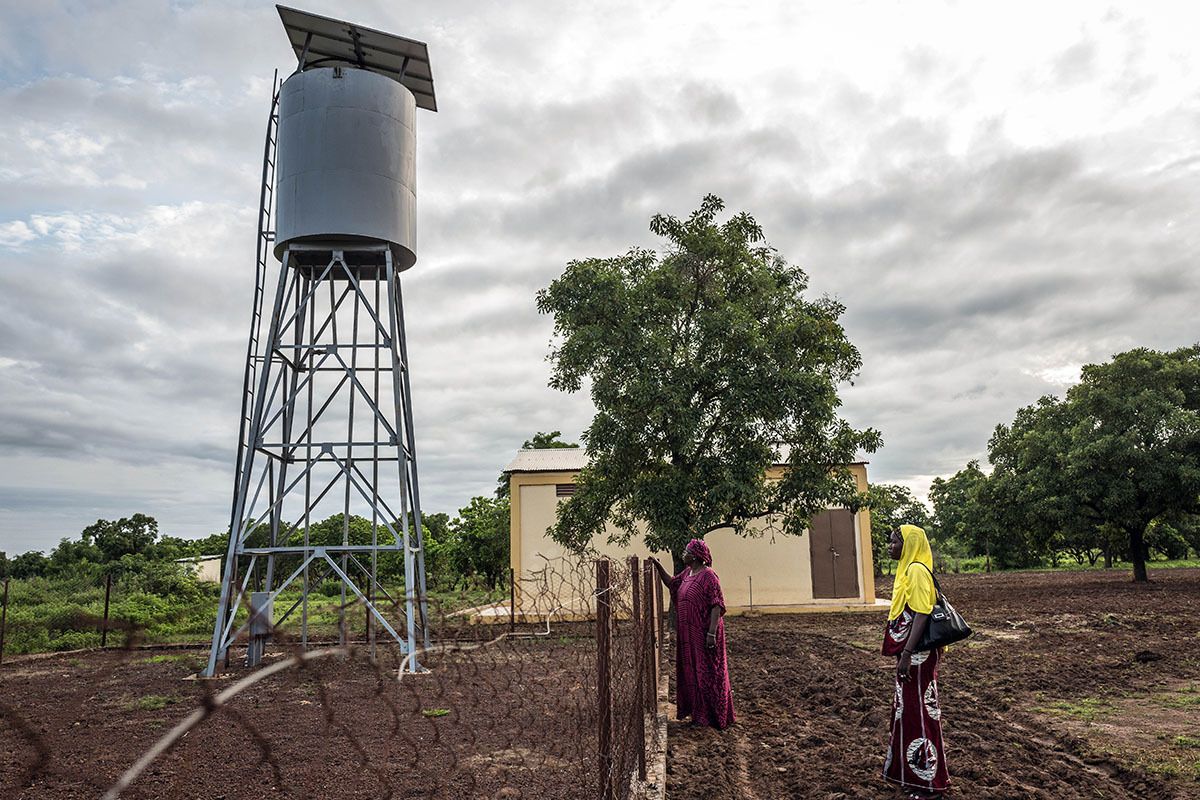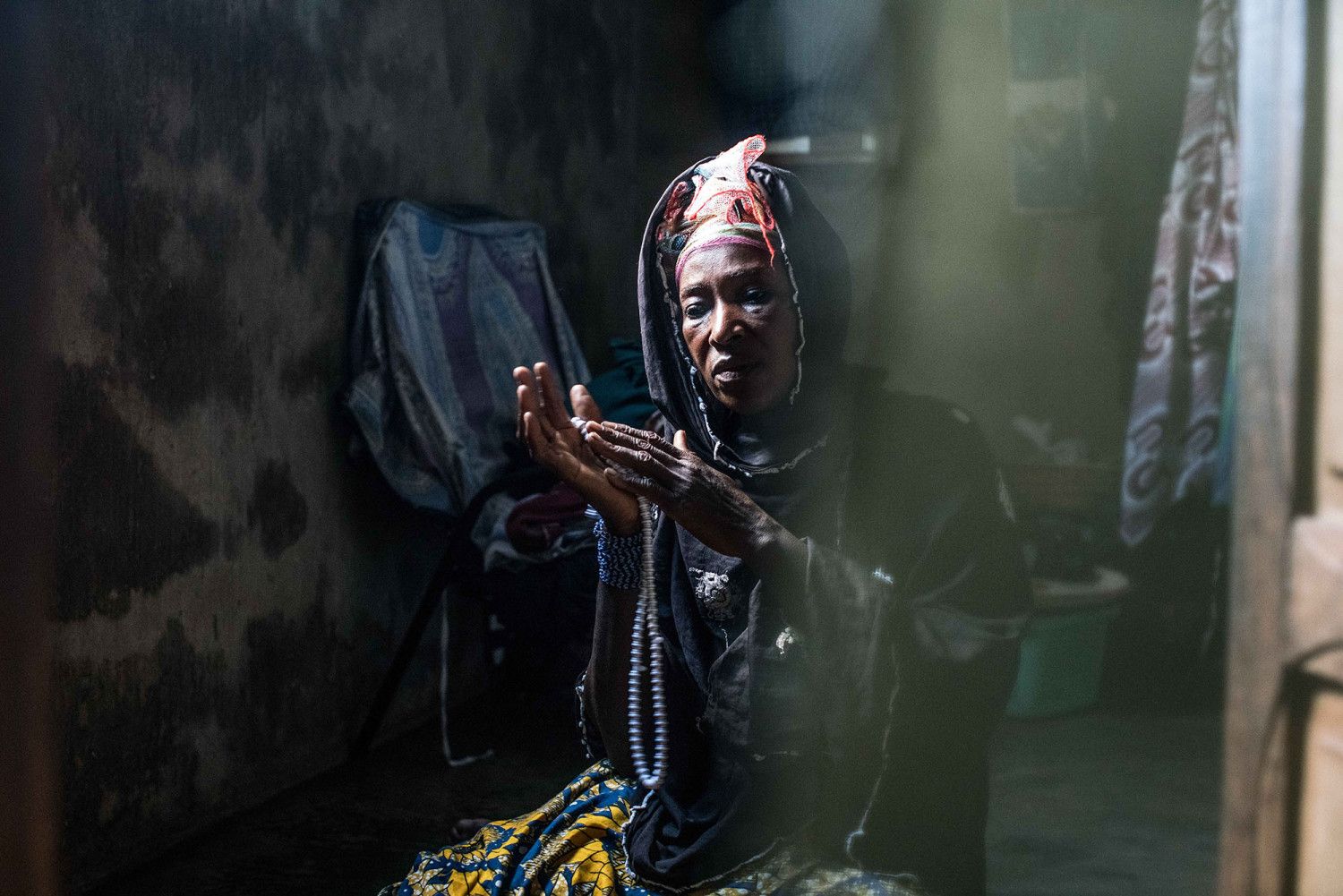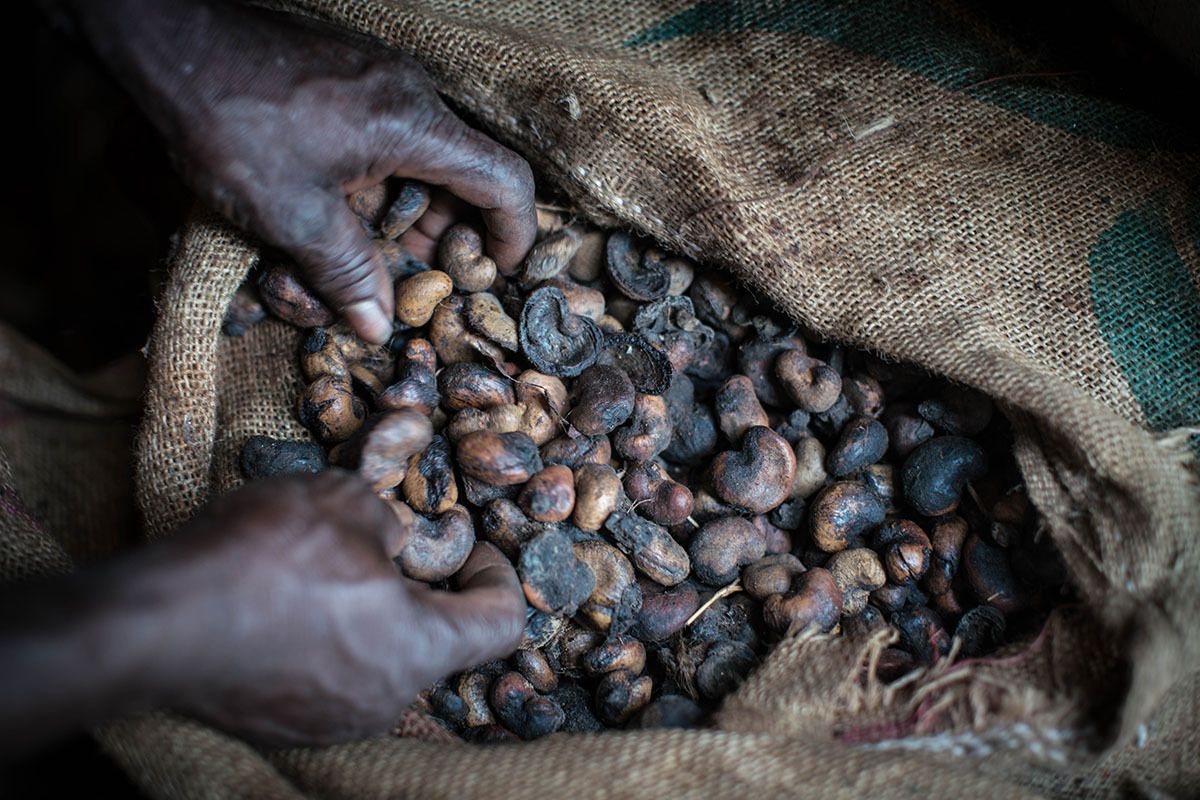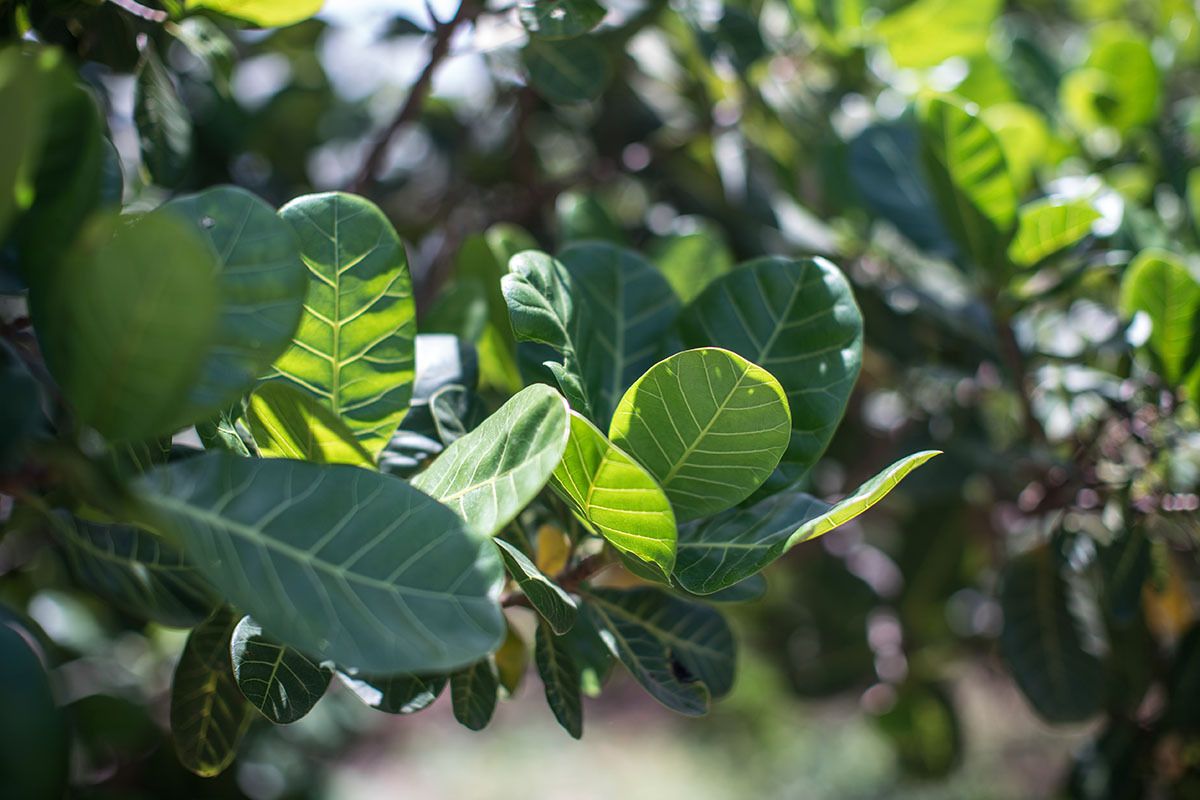KOLONDIÉBA, Mali—It had been 10 days since Abdoulaye Traoré did anything at work. The cashew processing plant where he and roughly 200 other Malian laborers made a living by stripping the fleshy husks off crescent-shaped nuts had been sitting idle since early February. It had run out of raw cashews.
Each day for the past week, fewer employees had reported for work. No one had been paid since the beige, barn-like facility, perched on the edge of a vast plantation of spindly cashew trees, had suddenly ceased operating. No one had been told how long the interruption would last — or if the plant was closing its doors for good.
Traoré, who at 26 had the wide shoulders and confident bearing of a college athlete, was beginning to wonder if he should look for another job. He had never intended to work at the plant forever, but shelling cashews paid better than most jobs in impoverished southern Mali, where almost everyone who lives comfortably has a family member sending money home from abroad. If not quite a ticket to a better future, the job was a chance to save up for one. “I think this is a good job, but now we are just waiting,” he told me in February. “Me, I am leaving for Ivory Coast on Monday or Tuesday. I heard there is work.”
That a small business in Mali would be hobbled by inefficiency is hardly surprising. More adults here are illiterate than can read, and the World Bank ranks the country as one of the most challenging in which to do business. But the cashew processing plant in Kolondiéba isn’t just any small enterprise. It’s one of Mali’s flagship development projects and the blueprint for future multimillion-dollar job creation initiatives aimed at curbing migration to Europe. It’s a preview of Europe’s answer to the migration crisis — or a big part of it anyway.
With tens of millions of migrants and refugees projected to arrive in Europe in the coming decades, on top of the million-plus who have claimed asylum in each of the last two years, the European Union is pouring billions of dollars into fighting migration at its source — much of it in impoverished and war-torn countries in Africa. The aim is to transform nations like Mali into more hospitable places. If it succeeds, Brussels is betting that it can convince some would-be migrants to stay home and African governments to stop others from leaving.
Ángel Losada Fernandez, the EU’s special representative for the Sahel, an arid region south of the Sahara through which hundreds of thousands of Europe-bound migrants transit each year, calls it the “EU strategy of security and development.” The aim is to create “the proper jobs on the ground” so that young men no longer feel compelled to leave, he says, while also helping governments “control all this territory.” Call it paying migrants to stay — or paying their governments to keep them at home.
In just under two years — lighting speed for the European Union — the 28-nation bloc has approved nearly $2 billion in spending on 116 projects aimed at countering the “root causes” of migration in 26 African countries. That’s on top of tens of billions of dollars more in existing development and security assistance from the EU and from member states, some of which has already been reallocated to better address concerns over migration.
Much of the money has been funneled into ambitious development projects: roughly $114 million for sustainable agriculture and food security in Senegal; $32 million for job creation in migration transit zones in Niger; $12 million for vocational training and youth empowerment in Gambia. All of it is administered through a multibillion-dollar EU Emergency Trust Fund for Africa, launched at a joint African and European summit on migration in 2015.
The idea that development can dry up migration is an appealing one for policymakers desperate for a humane response to the unprecedented surge of refugees and migrants. This year, more than 2,500 people have died attempting to cross the Mediterranean Sea to European shores. The crisis has already prompted an aggressive, securitized response from the EU and member states, including funding for detention centers and equipping security services in key transit countries so that they crack down on illegal migration. Development seems to offer a more palatable method of relieving migratory pressures, one that isn’t glaringly inconsistent with Europe’s professed values on human rights.
But the story of the Malian cashew factory — which was still sitting idle in July, five months after it first ran out of raw materials — highlights the immense challenges that await European policymakers seeking to remake the poorest countries on Earth into attractive places to live. It also exposes a false but largely ignored assumption upon which the EU’s entire plan to use development to fight migration is premised: Better jobs and more income, at least in the short and medium term, don’t typically relieve migratory pressures in desperately poor countries; they increase them, a fact that is well-documented by economists.
Like most of his friends, Traoré had long dreamed of migrating to Europe. Also like them, he lacked the resources to make it there. He wasn’t even sure he could afford to move to Bamako, the Malian capital, where he had been accepted to study for a law degree. “School is free, but you have to pay for housing, transport, books,” he said.
He had been saving money working at the cashew plant. But now that it was closed, the best option seemed to be to go in search of seasonal labor next door in Ivory Coast, the world’s largest producer of cocoa. The notion that someday there might be a well-paying job for him right here in Mali — the kind of job envisioned by EU policymakers — struck him as unlikely. If one suddenly appeared, though, Traoré knew exactly what he would do: “I would save money and go to Europe.”
A landlocked, hourglass-shaped nation bisected by the Sahel, Mali is both a significant source of Europe-bound migrants and a key transit country for migrants from other African nations, including Senegal, Ivory Coast, and Gambia. In 2012, jihadis briefly overran the northern part of the country before being repulsed by an intervening French military. Today, the backbone of the economy in this vast and lawless expanse in the north is smuggling. Narcotics and weapons, stolen and counterfeit items — billions of dollars’ worth of illicit goods move along ancient caravan routes that crisscross the Sahara each year. So, too, do tens of thousands of West African migrants, who cross the desert to Algeria in the backs of pickup trucks.
Hundreds of miles away in Mali’s semiarid south, remittances, rather than smuggling, are the main source of income. This is where the majority of Malian migrants hail from. Nearly a quarter of the country’s roughly 18 million nationals are thought to live abroad, elsewhere in Africa and in Europe. Experts estimate that the money they send back accounts for roughly 7 percent of GDP. In parts of the south, Western Union is widely seen as more important than development aid. One finds whole villages here with no working-age men. Musicians sing about the heroes of the sea and the sky, and elders whisper about jobless teenage boys who haven’t yet bid their goodbyes. A distant tomb, it is often said, is better than poverty at home.
One such place is Kolondiéba, a sleepy farming community surrounded by towering mango trees, two hours from the nearest paved road, where Spain’s development agency, known as AECID, opened the cashew processing plant last year. The lush, oppressively hot region near Mali’s border with Ivory Coast once had a thriving cashew export industry. But decades of government neglect left the sector a shambles. Now instead of drawing their sustenance from the land, residents depend on remittances from abroad.
Rehabilitating the cashew nut sector, development experts at AECID reasoned, could revitalize one of the poorest regions of one of the poorest nations on Earth. “For one U.S. dollar, you can plant one hectare’s worth of trees,” said Francisco Álvaro, an AECID official in Bamako who helped design the project. “You will employ one or two people on that hectare and one or two more on every hectare thereafter. We see potentially 5 million hectares of production in Mali. We are at 100,000 now, so that’s about 2 percent of our potential.”
Álvaro, who is short and excitable with salt-and-pepper hair, talks about cashews with the enthusiasm of an agronomist who has spent years immersed in his subject. The tree is well-suited to the inhospitable climate of the Sahel, he explains, and begins to produce nuts in as few as three years. Once it is mature, it can survive and produce even in a drought, since its roots tunnel as deep as 30 feet in search of ground water. In addition to the nuts, which command ever-higher prices in Europe and the United States, it produces a fruit that can be eaten or turned into juice or wine. Spoiled nuts can be made into soap.
But farmers in Mali have reaped few of the cashew trees’ theoretical benefits. Before Álvaro and his team arrived, most of the fruit was left to rot, and commercial wine- and soap-making were unheard of in places like Kolondiéba. The cashews were exported raw, meaning that middlemen in India and China profited from the shelling and roasting of the nuts.
So at a cost of roughly $7 million, Álvaro and his colleagues at AECID designed a pilot project that would serve as a model for a much larger cashew sector project funded through the EU Trust Fund. They built 10 small packing and storage facilities and one processing plant in Kolondiéba, where an association of women’s collectives operated manual shelling machines and baked the nuts in an industrial-size kiln. AECID also offered the women business training, including instruction on how to find markets for their produce.
Álvaro and his team had run the math: Revenue from the sale of processed cashews should have been enough to pay for the purchase of new raw cashews with a modest profit margin. AECID donated the first 15 tons of unprocessed nuts; after that, the operation was supposed to be self-sustaining. But by early February — before the plant had even processed and sold a single shipment of nuts — the pilot project had stalled.
Employees at the plant had different explanations for what went wrong. Some blamed fluctuations in the price of cashews, which made it difficult to budget for new raw nuts. Others said the problem was the decision to pay workers monthly wages based on the weight of the cashews they processed, a system that resulted in payouts that exceeded the money coming in from sales. The quality of the raw cashews delivered by AECID, a third of which were rotten by the time they could be processed, apparently also played a role. Whatever the proximate cause, it was clear that the women’s collectives — comprising mostly illiterate women but also a few men, like Traoré, who faced tremendous social pressures to migrate — had been left on their own to manage an industrial-scale operation with millions of dollars in assets.
“We can’t self-fund. This [operation] will stop for sure without more assistance,” Awa Touré, the president of the cooperative that manages the plant, told me. “Right now, we are not doing anything because we have no cashews left to process.”
None of the workers had been in contact with AECID since an on-site trainer from the development agency had departed several months previously. Some planned to hold out until more cashews arrived; others were already planning to leave town. “We will wait and see,” said Sangare Konaté, a slender 32-year-old whose colleagues playfully referred to her as la vieille, or “old” one. She has family members all over the world: an aunt in Angola, a brother who migrated to Italy, and another brother in the United States.
Back at the Spanish Embassy in Bamako, Álvaro seemed only vaguely aware of the troubles in Kolondiéba. “I don’t have all the details, but I think they have preferred to share the money. They should have saved it,” he said of the workers there. “The problem here is a cultural one. If you have money, you spend it all — it’s the same everywhere in Africa. People here don’t prepare for the future. There is an incapacity to save.”
When I asked whether the European Commission had requested to see the results of AECID’s pilot project before awarding the development agency roughly $15 million to scale it up, Alvaro said no. “Their first concern was the speed of the execution,” he said. “They didn’t ask anything about the quality of the implementation.”
Carlos Martin Ruiz de Gordejuela, a spokesman for the European Commission, said in an email that the results of a 2015 evaluation of the AECID pilot — carried out before the Kolondiéba plant was operational — had been considered as part of the decision to fund the agency’s new cashew project. He added that “knowledge acquired during the [pilot] project, the experience of the EU and other stakeholders, and the very high number of meetings and exchanges since the start of the [project] identification process” had also been considered. Price fluctuations in the international market for cashews, he allowed, had played a role in the “temporary inactivity” of the Kolondiéba plant.
To secure funding through the EU Trust Fund, development agencies like AECID must submit detailed project proposals that are evaluated in Brussels and by the EU delegation in the country where the project will be implemented. The screening process is rigorous, EU officials say, even though they acknowledge that there is tremendous pressure to get programs off the ground that might help ease the migration crisis.
“I can tell you that if the EU is spending money, even if we have to do it quick, fast, and sensible, we have always a control on what we are doing. It’s money of the taxpayers, so we have an evaluation and control,” said Losada, the EU’s special representative for the Sahel. Still, Losada acknowledged that the need to have an immediate impact has made it impossible to tailor each project to specific community needs. “We cannot do urgency, [act] immediately, and then to go case by case, problem by problem. We have to try to have a big impact, an immediate impact. That’s the philosophy of the Trust Fund,” he said.
The result is that virtually all of the grants have gone to European development agencies like AECID instead of to the Malian government or to Malian organizations. To support entrepreneurs in the south of the country, the EU has turned to France’s development agency. To aid impoverished communities in the north, it has contracted the Dutch development agency. In addition to revitalizing the cashew sector, Spain’s development agency has received funding to help reintegrate migrants who have returned to Mali.
“Out of 200 million euros from the Trust Fund, not one penny is being managed by the Malian government or by Malian nongovernmental organizations,” said Boulaye Keita, a technical counselor to the minister for Malians abroad, who was the main government point person for projects financed through the Trust Fund. “Some of these projects are drafted by people in Paris who have never been to the regions we are talking about. They have no idea what is happening there.”
European organizations have in some cases partnered with local organizations, and the EU-funded projects are often coordinated with the Malian government. But the overwhelming dominance of European agencies has contributed to a sense that Malians themselves are not benefiting from these programs.
“This is European aid for Europeans,” said Ousmane Diarra, the president of the Malian Association for Deportees, a Bamako-based organization that supports Malians who have been deported from abroad. Diarra told me that his organization has repeatedly sought EU funding for an agricultural development project. “If I come partnered with a European, then maybe they will finance me. But if I come alone as an African, no,” he said.
European diplomats say they are forced to partner with big development agencies because Malians lack the capacity to implement projects on the scale of those being approved through the EU Trust Fund. They also point to rampant corruption within the Malian government, which ranks in the bottom half of Transparency International’s Corruption Perceptions Index, as a reason to channel money toward European development agencies.
“Very often [with] local NGOs, to be honest, to have them as a contract partner for a big contract, you run into issues of fiduciary risks of lack of management capacity. So our taxpayers also want us to be sure that we know where the money is spent and we can justify every bit of it,” Jolke Oppewal, the Dutch ambassador in Mali, told me. “But I think with the [EU Trust Fund] we could do better in the sense of having more Malian engagement.”
Four months after work ceased at the Kolondiéba plant, AECID made its first trip there to assess what had gone wrong. The agency was planning a second visit, “more oriented to make a support plan to improve their operation,” Álvaro told me in an email dated June 3. When a photographer for Foreign Policy returned to the plant in July, the facility was still shuttered; a lone security guard watched over the deserted grounds. Unused equipment, some of it damaged, was stacked against the wall. Traoré had gone to Bamako to study law after an uncle offered to pay the $2.90 in monthly rent for a single room he now shares with two other young men in a slum on the outskirts of the city.
Undaunted, AECID was moving ahead with its new $15 million project, funded through the EU Trust Fund, that aims to build new cashew processing centers across southern Mali and train hundreds of local residents to work at them. Together with Mali’s Ministry of Agriculture, AECID plans to plant thousands of hectares of cashew trees.
Properly managed, it could revitalize a key sector of the economy and have positive, trickle-down effects on as many as 200,000 people. Whether that happens will depend at least in part on AECID’s ability to learn from the failure of its pilot project. Álvaro told me in February that he was already applying some of these lessons to the new project: Salaries won’t be paid out until operating costs are covered, he said, and he is considering hiring Spanish or Chinese businessmen to manage the new plants. Depending on whom one asks, that will either improve the quality of management or reinforce the notion that foreigners are the main beneficiaries.
Either way, experts are doubtful that this or any other development project aimed at creating jobs can reverse, or even slow, the tide of emigration. “If the success of your policy is dependent on being able to defeat both market forces and human nature, your chances of success aren’t good,” said Kathleen Newland, a senior fellow and co-founder of the Migration Policy Institute.
Michael Clemens, an economist at the Center for Global Development in Washington, has studied the interplay between development and migration for years. He has found that development gains, far from keeping young people at home, are associated with increased migration — until a country attains a per capita income of roughly $7,500 (or three times that of Mali). “There’s this idea that development and migration substitute for each other that underlies all of this. That if we can just make a sufficiently successful industrial park in Ethiopia, that people will go work there and migration will end,” Clemens said. “That ignores the many, many ways in which migration and development complement each other.”
Not only does more income mean people can do more expensive things, like pay a smuggler thousands of dollars to take them to Europe; it typically means more education and bigger aspirations. That’s why Clemens says on average as countries transition from poor to middle-income, they experience a “dramatic rise” in migration. Over the very long term, it is true that development would depress migration as a country transitions to developed status. “But Mali is not going to be a developed country in our lifetime or in the lifetime of our children,” he said. “The reality is that the development of nations is measured in generations.”
Young people are not given to waiting for improvements measured in generations. In the next three decades, Mali’s population will more than double to roughly 45 million. Across sub-Saharan Africa, according to Gordon Hanson and Craig McIntosh of the University of California-San Diego, some 800 million working-age people will enter the labor force — more than the current population of Europe. This massive demographic bulge is itself proof of development success; infant mortality rates have plummeted across the continent while birth rates have dipped only slightly. But it is also proof that more development aid won’t slow migration, at least not for many years.
The EU and member states already spend roughly $24 billion on development and other aid in Africa each year, but the exodus of young men continues. Much of the funding disbursed through the EU Trust Fund is “more of the same, but it’s now more explicitly linked to the goal of reducing migration,” said Bram Frouws, the policy and research coordinator at the Danish Refugee Council’s Global Mixed Migration Secretariat. “Our expectations in terms of reducing migration have to be very modest,” he said, especially if corruption and poor governance remain problems in these countries. Frouws pointed to West Africa, where most countries are “relatively stable and growing economically.” Yet, he added, “more and more West Africans seem to be trying to migrate to Europe.”
From his new home in a corner of Bamako where ambition tends to outpace opportunity, Traoré still thinks about traveling to Europe, though it feels farther away than ever. He and his roommates, a chauffeur and an electrician, share a single mattress on the floor of their one-room flat. Sweaters and trousers hang from pegs on the walls. A coral pink blanket is the only color in the otherwise drab, windowless room. The university is nearly an hour away, across a stagnant stream that doubles as a sewer and along wide, dusty streets crowded with honking scooters and yellow Mercedes-Benz taxis from the 1970s. He can’t always afford the trip, so he misses a lot of classes. If suddenly he found himself with money to spare, though, he knows he wouldn’t waste it on getting to school.
